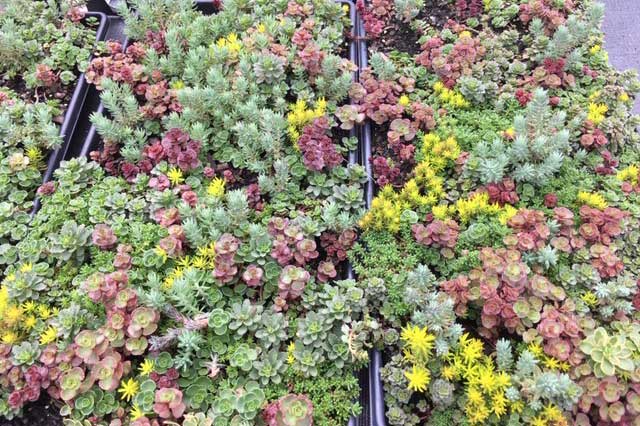Sedums & Sedges Part 2: All About Sedges
Sedums and sedges are great options for gardeners who are looking for low-maintenance plants for their gardens.
In gardeners’ never-ending quest to find good-looking plants that thrive with minimal care, sedums and sedges together have taken one of the top spots. The two also happen to look good together and are broken into two growth habits – low-growing varieties spread along the ground, maxing out at a height of just a few inches or less, while upright varieties form tall, upright clumps that create a mass of tiny flowers.

Sedums – sometimes nicknamed “stonecrop” – are succulent-leafed plants that are tough in heat and drought, unlikely to encounter bug or disease problems, and aren’t common targets of deer or other animal pests. Sedges are grass-like plants that share the same anti-bug/disease/animal traits and come in an array of foliage colors and textures.
Sedums are sold in pots or as plugs that can be easily transplanted into your garden. They should be planted in well-drained, average to rich soil. For best results, space your sedums between 6 and 24 inches apart, depending on the variety.
Once your sedums are planted, they require little care to no care, as long as they’re planted at the proper time. Simply check the soil around the plant regularly to make sure they aren’t too dry, and only water sparingly if needed. As long as the plant receives sporadic rain, it shouldn’t need any extra watering.
The best time to plant sedums is in the early spring. This ensures the plants won’t be at risk of frost and will avoid the summer heat. Sedums will tolerate partial shade but will flourish the best in full sun after roots have taken hold.
Sedums come in many different colors and shapes, ranging from green-leafed creeping sedums to ones with dark foliage. At some garden centers, they will offer flats of mixed creepers called “Sedum Carpets” that can be laid on top of loosened ground to create an instant, rainbow-colored groundcover.